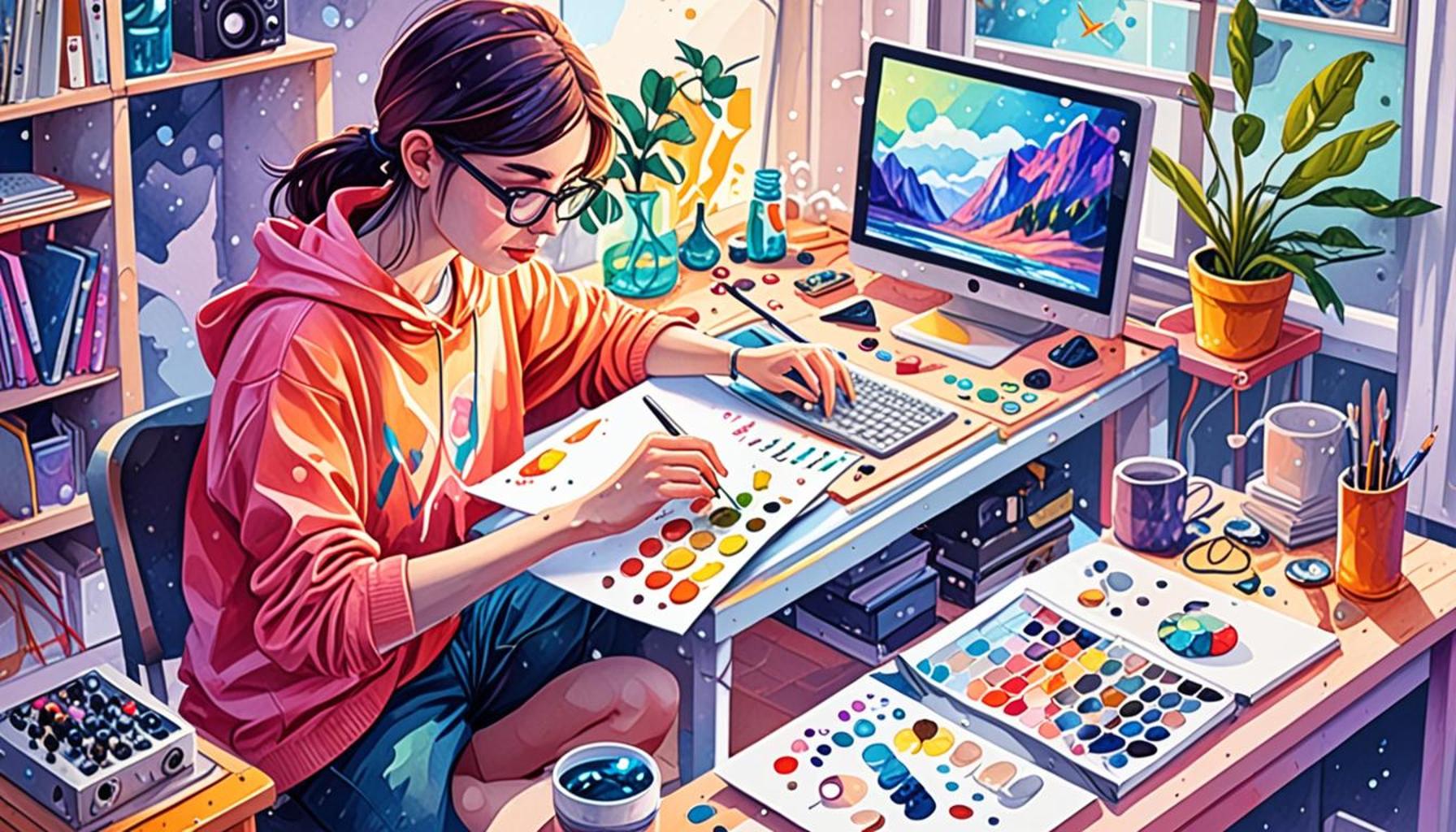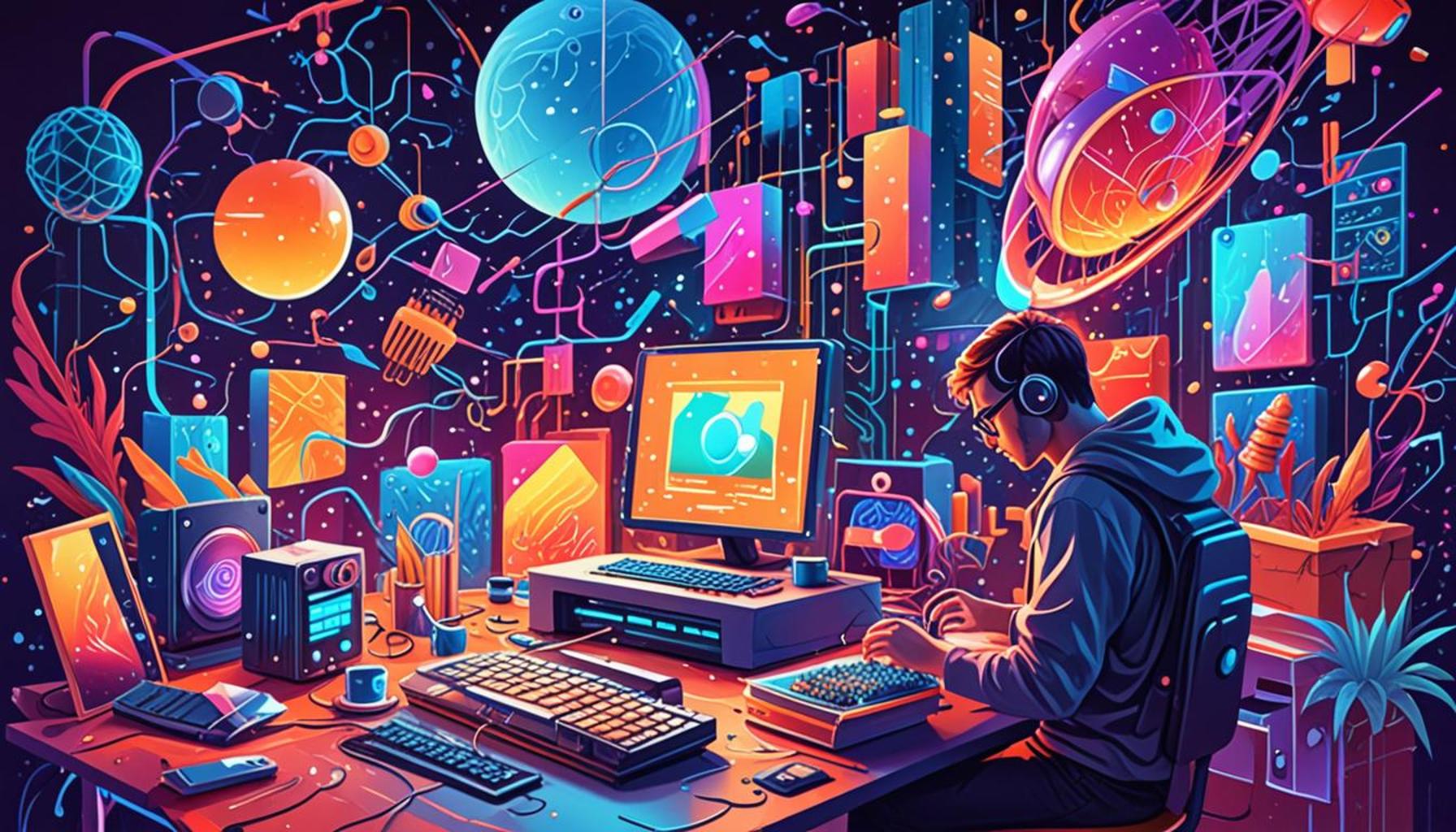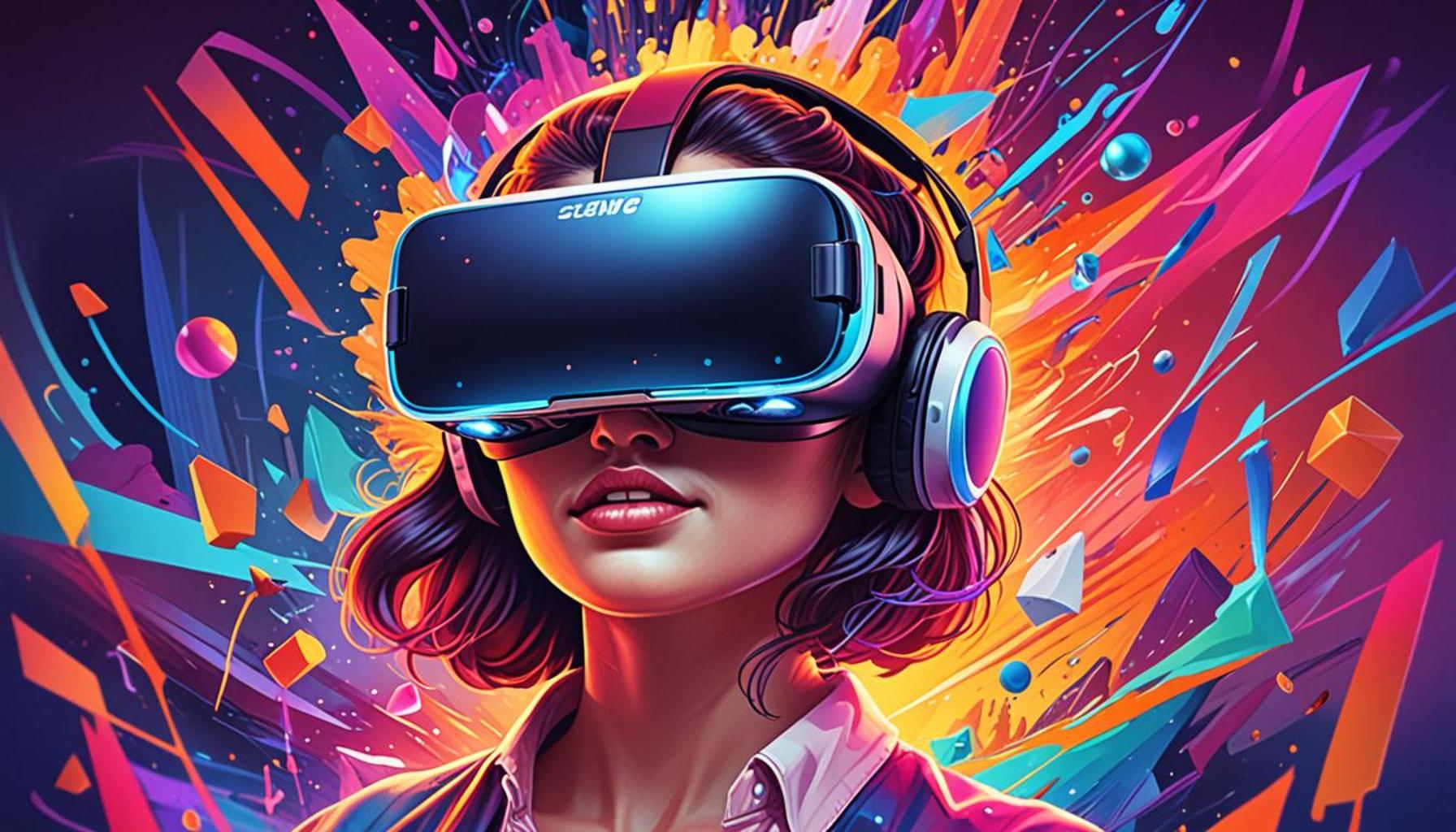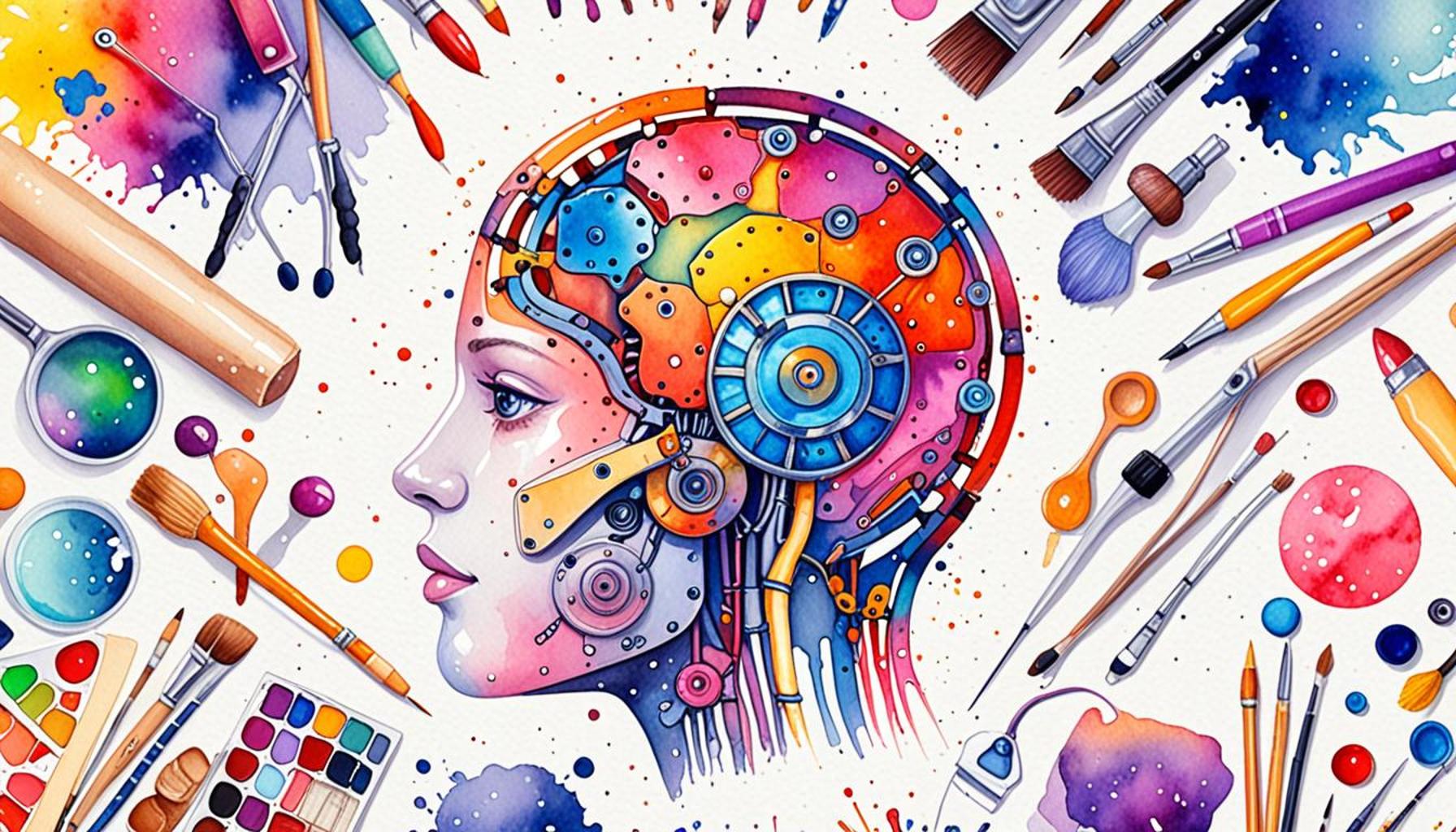Exploring the Intersection of Coding and Art in Digital Hobbies

The Convergence of Artistry and Technology
In a world increasingly immersed in digital interactions, the lines separating coding and art have become remarkably indistinct, resulting in a revolutionary shift in creative expression. This fusion of technology and creativity not only redefines conventional artistic mediums but also invites enthusiasts from various backgrounds to explore a dynamic landscape where innovation thrives. The advent of sophisticated software, immersive platforms, and collaborative tools is paving the way for artists and tech aficionados alike to create works that captivate and inspire.
Take, for instance, Generative Art. This genre utilizes algorithms and code to generate captivating visualizations, resulting in art that is often unpredictable and stunningly unique. Artists like Casey Reas, co-founder of Processing, utilize programming languages to create visual works that evolve in real-time, allowing viewers to witness the birth of art as it unfolds. This approach not only challenges the notion of authorship but also creates a dialogue between artist and audience in a new, interactive format.
Interactive Installations represent another thrilling intersection of technology and art, where coding transforms static images into engaging experiences. Museums and galleries are increasingly showcasing installations that react to viewer movements or inputs, such as teamLab’s “Borderless” exhibition in Tokyo. Here, visitors can interact with digital landscapes that change in response to their presence, creating an experience that merges individual creativity with collective interaction.
Another fascinating aspect is Digital Sculpting. With the emergence of advanced 3D modeling software, artists can push the boundaries of what can be physically created. Tools like Blender and ZBrush empower creators to sculpt intricate designs that can be brought to life through techniques such as 3D printing. This technology encourages experimentation and allows artists to realize visions that were once confined only to imagination.
Moreover, Video Game Design has evolved into a legitimate form of art, blending narrative, graphics, and gameplay into immersive storytelling experiences. Titles such as “Journey” and “Shadow of the Colossus” exemplify how games can convey profound messages through their visuals and mechanics, leaving a lasting impact on players. This domain showcases how the coding process itself can be a means of creative expression, pushing boundaries in ways traditional media cannot.
As we navigate this multidisciplinary realm, it’s clear that the potential of digital tools to inspire creativity is endless. The collaboration between artists and coders is yielding groundbreaking pieces that not only challenge our perceptions but also push the limits of creative practice. Whether you are an aspiring artist, a seasoned coder, or someone simply curious about the possibilities, this fusion beckons you to explore new frontiers in creativity.
Are you prepared to embark on this thrilling journey? The convergence of coding and art within digital hobbies presents an unparalleled opportunity to innovate and experiment, inviting everyone to delve into uncharted territories in the name of creativity.
DISCOVER MORE: Click here for insights on the latest trends in collecting
The New Digital Palette: Tools and Techniques
As the lines blur between coding and art, a slew of innovative tools and techniques are emerging, radically transforming how creatives navigate their digital hobbies. From intuitive software platforms to user-friendly coding languages, the accessibility and variety of resources are enticing a broader audience to the world of digital creation. Whether you are a novice looking to create your first project or a seasoned artist seeking to expand your technical horizons, understanding the available tools can be key to unlocking your creative potential.
One of the most widely used platforms is Processing, a flexible software sketchbook and a language for learning how to code within the context of the visual arts. Developed by Ben Fry and Casey Reas, Processing has become a community-driven project, enabling artists to develop visualizations and interactive displays with relative ease. This platform often serves as a gateway for those new to coding, demonstrating how algorithm-driven creativity can be intuitively harnessed.
An equally impactful tool is p5.js, a JavaScript library that makes it easy to create graphics and interactive content in web browsers. Building on the foundations established by Processing, p5.js offers the advantage of web compatibility, allowing artists to share their creations widely. This library is particularly significant in the realm of interactive web art, where users can engage in real-time with art pieces through their devices. Furthermore, the vast amount of online resources and tutorials fosters a nurturing environment for learning.
Exploring Diverse Applications
The intersection of coding and art also finds expression in several fascinating applications, which include:
- Data Visualization: Artists are using coding to transform complex datasets into compelling visual narratives. From infographics to interactive maps, this enables viewers to grasp intricate information quickly while appreciating aesthetic form.
- Animation and Motion Graphics: Software such as Adobe After Effects and Blender allows coders and animators to create mesmerizing animated sequences that can enhance storytelling in various media, including films and video games.
- Augmented Reality (AR) and Virtual Reality (VR): With tools like Unity and Unreal Engine, artists are crafting immersive experiences that allow viewers to engage with art in a spatial context, transcending the constraints of traditional viewing environments.
Moreover, a growing number of artists are harnessing Machine Learning (ML) to generate unique artwork. By training algorithms on existing datasets, artists can create pieces that possess characteristics inspired by renowned styles or even generate entirely new forms. This innovative approach ignites a discussion surrounding the role of the artist in an age dominated by intelligent machines.
As these tools and applications continue to evolve, they are inviting anyone with an innate curiosity to dive into the intersection of coding and art. The possibilities are vast, suggesting that the traditional barriers of entry are lowering, with more creators poised to join this vibrant community. Whether one’s interest lies in generative art, interactive installations, or exploring the world of 3D modeling, the journey into the digital realm of creative coding is rife with opportunities waiting to be discovered.
Exploring the Tools and Techniques
As the digital age continues to evolve, the tools available for blending coding and art have become increasingly sophisticated. Artists and coders alike are taking advantage of a plethora of software and programming languages designed to enhance creativity and productivity. Tools like Processing, P5.js, and OpenFrameworks allow for the seamless integration of visual art and algorithmic design, making it easier for creators to explore unprecedented dimensions in their work.Moreover, platforms like Adobe XD and Figma are enabling designers to not only visualize their ideas but also bring them to life through interactive elements. The combination of traditional art techniques with coding facilitates unique expressions such as generative art, interactive installations, and immersive experiences that captivate viewers and challenge conventional methodologies.
The Community Aspect
In the ever-expanding realm of digital hobbies, community plays a pivotal role in supporting growth and innovation. Forums and social media groups dedicated to digital art and coding offer spaces for individuals to share their work, exchange ideas, and seek feedback. This collaborative atmosphere invites a deeper exploration of concepts and techniques, often leading to the emergence of hybrid art forms that blur the line between technology and creativity.Hackathons, workshops, and online courses are increasingly popular avenues for enthusiasts to hone their skills and collaborate on projects. Events like these are essential in fostering a culture of experimentation, where the intersection of coding and art can produce groundbreaking work.
| Advantages | Description |
|---|---|
| Enhanced Creativity | Combining coding with art fosters innovative thinking and new artistic expressions. |
| Collaborative Community | Engagement with others in the field encourages shared learning experiences and collective growth. |
As the fascination grows at the intersection of coding and art, it becomes clear that digital hobbies are not just about personal expression but are also pathways to building connections that resonate beyond the digital canvas.
DISCOVER MORE: Click here to learn how gardening can boost your well-being
The Creative Coding Community: Networking and Collaboration
As artists and coders converge in their creative pursuits, a vibrant community has emerged, filled with opportunities for collaboration and networking. This artistic ecosystem thrives on the exchange of ideas, skills, and resources, creating a space where innovation can flourish. Numerous online platforms and local meetups are now dedicated to connecting creatives who share a passion for blending coding and art.
Platforms like GitHub and Behance allow creators to showcase their work, curate digital portfolios, and collaborate on coding projects. GitHub, in particular, serves not only as a repository for code but also as a collaborative space where creative coders can contribute to open-source art projects and experiment with algorithms collaboratively. This fosters an environment of continuous learning and experimentation, allowing users to build upon each other’s ideas and projects.
Participating in Digital Art Events
The rise of digital art festivals and hackathons further enhances community engagement. Events such as Nuovo Fest and Processing Community Day offer artists the chance to present their work and connect with like-minded individuals. These gatherings nurture collaboration by encouraging attendees to engage in workshops, present their projects, and receive feedback from peers and industry leaders alike. The interactions that stem from these events often spark new creative directions and partnerships, transcending geographical barriers.
Moreover, competitions like ArtPrize and CodeFest celebrate the uniqueness of coding-melded artworks by awarding prizes to creators who push the envelope of what is possible within their discipline. Such initiatives elevate the recognition of digital art forms and inspire more creators to explore the intersection of art and technology. Furthermore, they provide incentives for artists to hone their skills, experiment with new techniques, and gain visibility within a larger artistic network.
Education and Resources for Aspiring Creatives
With the growth of this community, there are also an abundance of educational resources available to aspiring digital artists. Online platforms such as Coursera and Udacity offer courses on programming languages and creative coding, often taught by industry professionals. These courses not only cover technical fundamentals but also encourage creative exploration, making it easier for new artists to turn their ideas into reality.
Mentorship programs are burgeoning as well, offering aspiring artists the chance to learn from seasoned professionals who have successfully navigated their own journeys at the intersection of coding and art. In these settings, one-on-one guidance can lead to breakthroughs, helping fledgling creatives refine their skills and embark on meaningful projects.
As digital hobbies continue to evolve, the community surrounding the intersection of coding and art will likely grow more interconnected and innovative. The vast resources and collaborative opportunities available in this space encourage individuals to push the boundaries of their creative potential, inviting newcomers into a world rich with possibilities, a testament to the synergy between technology and artistic expression.
DIVE DEEPER: Click here to discover the evolution of creative hobbies</p
Conclusion: The Future of Creative Coding and Digital Art
As we have seen, the intersection of coding and art presents a dynamic canvas for creativity, allowing individuals to explore their artistic inclinations through the lens of technology. This synergy has spawned a myriad of digital hobbies that not only enhance personal expression but also foster a sense of community. Emerging platforms and collaborative experiences empower creatives to share their talents, engage in cooperative projects, and learn from one another. Thus, the enriching landscape of creative coding becomes a breeding ground for innovation.
Furthermore, various educational initiatives—ranging from online courses to mentorship opportunities—equip aspiring artists with the necessary skills to navigate this fascinating domain. These resources bridge the gap between understanding technical aspects and unleashing artistic potential, encouraging a new generation of digital creators. As events like Nuovo Fest and Processing Community Day proliferate, they not only spotlight the brilliance of coding-infused artworks but also nurture networking and collaboration among artists.
In light of current trends, the future looks promising for the fusion of art and technology. The scope of digital hobbies is set to expand, compelling creatives to venture into uncharted territories of artistic expression. As innovators continue to push boundaries, those willing to delve into this exciting intersection may discover new ways to interpret and engage with the world around them. Ultimately, the ongoing dialogue between coding and art offers a rich field for exploration, inviting individuals to uncover their creativity in ways previously unimagined.


